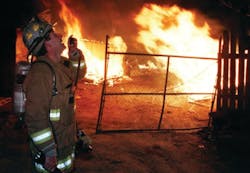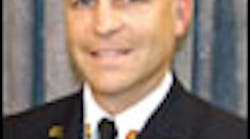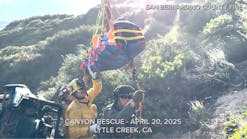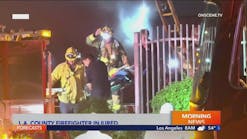After years of study, the academic world has identified numerous ways that individuals can make decisions. For the fire service, there are two ways in which we typically make decisions without consciously knowing it sometimes. The “Natural” (also known as Recognition Prime Decision Making (RPD)) and the “Classical” Decision Making methods are the two predominant methods we utilize.
RPD is the ability to quickly determine the problem, find a solution and institute that solution based on previous experiences. We as fireground commanders use our previous experiences to determine our strategy and tactics at those fires we are currently commanding. Classical Decision Making entails the decision maker identifying the problem, analyzing the problem, generating possible solutions, determining the pros and cons of those solutions, identifying the best possible solution, garnering input from outside sources to determine the success of the solution and then implementing the solution. This method requires additional time and more resources than RPD and can delay actions on the fireground, possibly creating a loss of time, property and lives. Make no mistake though; both decision-making models have a place within the fire service. The subject of this article will be the RPD method.
How You Arrive At Decisions
RPD is a process in which people use their experiences in the form of a repertoire of patterns.These patterns identify the most relevant cues, provide expectancies, identify goals and suggest types of reactions in these situations. What this means to the fireground commander and company officers is when a quick decision is needed, they quickly search for a solution from previous experiences, find the closest match, run a mental simulation of what the outcome should look like, make any adjustments to that solution and implement the solution.
It is no secret that fireground commanders have to make quick decisions with a limited amount of knowledge about the situation and then institute that solution. What is interesting is that in one study, almost unanimously, all the experienced fireground commanders interviewed believed there were alternative actions to the one they chose; however, they never considered those options during the fireground operations. For the RPD model to be effective, those making decisions must have previous experience and education from which to draw solutions. These aspects grow as ones career, experiences and education increase.
An example of RPD being used on the fire scene looks like this:
Battalion Chief (BC) 1 has arrived on the scene of a three-story, wood-frame, single-family dwelling with heavy smoke showing from the 3rd floor of side B. The BC has already formulated a mental simulation of an engine advancing an attack line through the entry door on side A, ascending the interior stairway to the 3rd floor, where they, with the assistance of a truck company, will advance into the room on fire, knock down the fire, ventilate and clear the structure on a primary survey for occupants.
Based on the BC’s previous experiences as a firefighter and company officer, they formulate the steps that will occur to get to the point of fire attack and extinguishment. What has to be accounted for in the RPD model to maintain its relevancy is situation assessment. Situation assessment provides a continual flow of information to the BC in which they can update the strategy and tactics they are utilizing formed from RPD.
There are generally four aspects of situation assessment that support this model of decision making:
- 1. understanding the types of goals that can be reasonably accomplished in that situation;
- increasing the recognition of cues that are important within the context of the situation;
- forming expectations that can serve as a check on accuracy of the situation assessment; and
- identify the typical actions to take.
An additional action that fireground commanders and company officers can take to increase RPD is utilizing the knowledge of others on the fireground. If we utilize our personnel on the fireground, we can largely expand the four situation assessments in which we can draw experience from and create a more effective solution. We have to remember that we made our initial decisions based on a snapshot in time upon our arrival.
As the fireground commander, we must continually reassess the strategy and tactics being utilized to maintain and re-establish realistic goals and objectives. We have to be cognizant of the cues we are getting from our company officers and understand how they fit into the situation.
An example of this would be a fire in a basement that has been extinguished and in the overhaul mode when the officer of a truck company advises they have smoke on the 3rd-floor bathroom. Immediately, your RPD should tell you that fire may have traveled up a pipe chase and could be in the attic. Next, we form the expectations of how the fire operations are going to go and what that looks like. If we identify something that is not looking or going as expected, then we have to adjust our assessment of the situation to reflect the more accurate situation. Failure to do this step is where fireground fatalities and injuries occur! Lastly, we identify the typical actions that need to be taken to solve the problem we are facing. This last point is important in that, as the fireground commander, we have to rely on our officers to utilize their experiences and education to implement the actions to meet our strategic and tactical goals.
Mental simulation is an important aspect in the continual re-evaluation for the fireground commander. Thinking through scenarios that range from handlines advancing quickly into a room, the number of personnel assigned to rescue operations, to the utilization of aerial and ground ladders in hope of saving the most lives and limiting the loss of the property. As long as the situation assessment and simulations conform to actual fireground operations, the stage for success is set. If however, the situation assessment or simulations are inaccurate with the current fireground operations, failure is almost ensured.
Understanding how you make decisions on the fireground will help you formulate more comprehensive strategies and realistic tactics. As the fireground commander, we must ensure that we have as much up-to-date information about the situation we are facing and continually evaluate that information to ensure the safety of our personnel and the effective outcome of our operation.
JEFF JOHNSON has over 23 years of fire service experience and is a battalion chief with the Kansas City, MO, Fire Department assigned to Battalion 107 covering of the south side of the city. Johnson holds a masters in public administration and a bachelors of science in fire service. Jeff was a guest on one of the first Training & Tactics Talk podcasts on Firehouse.com.







